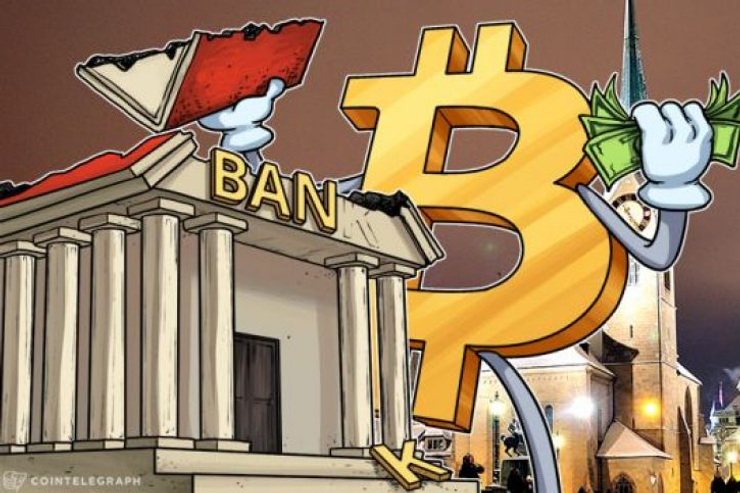Hi, I’m Adil Wali. I became a Microsoft certified professional at age 14 and started my first web development company. That led to a career as a serial entrepreneur, advisor, and startup investor. I got my first “real job” at 33, and I’m now a FinTech executive with a passion for the markets.

Hudson’s Bay recently confirmed its acquisition of Gilt Groupe for $250 million earlier this month.
As a company that has raised $300 million in venture funding, this is clearly a disappointing outcome for Gilt. I remember meeting executives at Gilt back in 2009, when the company was riding high and approaching it’s $1 billion valuation1.
It seems that a lot has changed for Gilt over the years. It’s important to explore the story of the company, and take away what we can in terms of lessons learned for eCommerce more broadly.
The Path to Success
Companies like Gilt were part of the ‘back-to-the-future’ crop of new-age permission marketing companies. While their business model was largely new, the overarching concept really wasn’t. People have been giving businesses permission to send them messages on deals and company updates for many years. (Think retailer-specific credit cards as just one example of this.)
The difference with a flash-sale retailer like Gilt is that the site had a members-only appeal to it. The idea was that you got access to private sales in exchange for creating an account and letting them email you sales updates each day. As a consumer, you’d want to do this because you’d have access to deeply discounted products as part of these sales.
Further driving conversion was the scarcity of these sales. The sales would be one-day only, and most of the good products would sell out in mere hours…
My sense of the contributing factors to some of the stagnating valuation are as follows.
Communication Channel Fatigue
The problem with Gilt and the broader flash-sale category was the negative network effects. The more flash-sale retailers there were, the less interesting it became to be a flash-sale retailer. Why? Because the more sites that a consumer gives permission to, the less likely that consumer is to actually see the marketing messaging.
Plus, Gilt gets more than a third of its revenue through Gmail email campaigns, but Google filters marketing messages out of main inbox, making them much harder to get attention2.
Also competing with that communication channel are specialty retailers and department stores in the U.S who are commonly offering 30-50% percent markdowns on new inventory and even better deals on older merchandise3.
Gilt grew rapidly in its early days by selling heavily discounted excess inventory at a time when the economy was strained and big brand fashion manufacturers had plenty of excess inventory to unload. Now that the economy has strengthened and lux fashion brands have scaled back production, there’s less inventory to deal with. When they do have excess inventory, more outlets are available for distribution, including giant off-price retailers like T.J. Maxx.
Too Big, Too Fast
It’s called breakneck pace for a reason. One of the dangers of growing in valuation and size as quickly as Gilt Groupe did is that it’s hard to operate efficiently when you are in hypergrowth. With large infusions of cash (like the $138 million it raised in 2011), it can be very tempting to spend quickly and attempt to chase growth.
If there is any lesson that venture-backed startups are doomed to repeat learning time and time again, it’s this one: An inorganic shape of growth is often a dangerous one. Once companies hit an initial ramp of growth, venture investors expect that growth to remain constant or accelerate into perpetuity without any bumps in the road. The problem with this way of thinking, of course, is that company leaders feel like they have to chase growth at all costs for fear of being categorized as a ‘slowing-growth startup.’
The reality of growing a business is often very different than perfectly up-and-to-the-right graphs of accelerating growth. It takes material investment in product, operations, and talent to really keep a business growing healthy. That’s usually a lumpy process. And success is often a lagging indicator to these kinds of major investments.
The reality of the flash-sale category is that from 2005 to 2010, industry revenue growth grew at an average annual rate of 76.2%, according to IBISWorld. Since 2010 to 2015, that has declined to 16.7% annual growth.4.

Commerce Without Vertical Integration Is Dying
Yep, I said it. And I’ll say it again (more thoroughly) in another post. eCommerce has changed retail forever. Back before the proliferation of internet buying, having a cool and curated set of products was a differentiator and enough to grow a successful business.
You could have the coolest little shop on the block, and it could have cooler products than other stores. People would quickly find that they could come to your store because you ‘got them’ and their lifestyle. Even if there was a store one town away that got them better, or had a bigger selection of product, they still might not shop there because of the additional time and effort associated with going there.
This idea of winning on curation translated online, but only in a limited way. That’s because the switching costs of shopping online are approaching zero. It’s as simple as Command-T to open a new browser tab and check another site for the same product. So it matters a lot less if a retail site ‘gets you.’ It matters a lot more if they have the best price.
It seems only inevitable, in this new digital commerce world, that folks who sell the same product as everyone else are engaging in a race to the bottom in terms of pricing.
The way out? Produce something. Make a product that’s the best in the world at what it does, and people will find their way to it. If you control the methods of distributions, then they’ll only be able to buy it from you or a channel you control.
Lessons We Can Learn
I’ll admit that I thought Gilt was going to be worth upwards of $2 billion when I first met members of the team and watched their meteoric early growth. Hindsight is 20/20.

First and foremost, it’s important to think about competitive advantage that is sustainable and hard to erode. I think for companies like Gilt, and most in the flash-sale category, this is difficult (if not impossible) to achieve.
Vertical integration and having a product advantage is just one example of how a company can build a moat and defend itself from the competition. Vertical integration can offer many advantages5, including:
- Lower transaction costs.
- Supply assurance.
- Improved coordination of production and inventory scheduling.
- Better coordination of marketing and technical functions.
- Higher barriers of entry for the competition.
Ultimately, the issue related to chasing growth won’t go away until Silicon Valley gets better at understanding what slow and deliberate growth looks like. The lemming culture around chasing hot deals (that just happen to have the right shape of growth for venture) is dangerous and will continue to lead to the destruction of shareholder value.






